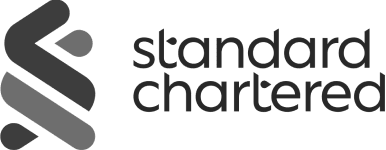- Home
- Industries
- Industries | SaaS

Empower your SaaS company with our multifaceted IT solutions
We help SaaS companies accelerate growth by turning their ideas into sustainable, data-driven solutions.
Numbers
Cybersecurity
SaaS-based cybersecurity services are in high demand, with the global market expected to grow at a CAGR of 12.6% between 2021 and 2028.
Architecture
As organizations continue to move towards cloud-based solutions, the global market for SaaS-based IT architecture and design is expected to reach USD 8.24 billion by 2026.
Testing
The global market for SaaS-based testing and quality assurance is projected to grow at a CAGR of 22.2% to 2027.
Business journey
Details
-
Scalability
-
As your SaaS company grows, you need to ensure that your infrastructure can support the increasing demand for your services. This requires a scalable architecture that can handle spikes in traffic and usage.
-
Cloud-based infrastructure
Move to a cloud-based infrastructure, which can provide scalability on demand. This can include using cloud platforms such as AWS or Azure, containerization, and Kubernetes. -
Microservices architecture
Implement a microservices architecture that can be scaled independently, allowing you to scale only the services that are in high demand. -
Load testing
Conduct load testing to identify the bottlenecks and capacity limits of the SaaS application. Based on the results, optimize the infrastructure and application code to ensure scalability. -
Horizontal scaling
Adopt horizontal scaling, which involves adding more instances of the application to handle increased demand. This can be achieved by using load balancers, auto-scaling groups, and other techniques. -
Disaster recovery
Implement disaster recovery procedures to ensure the SaaS application can continue to operate in the event of a catastrophic failure. This can include setting up backups, replication, and failover systems. -
Monitoring & logging
Set up monitoring and logging systems to track the performance of the SaaS application and identify issues before they impact users. This can include using tools such as Prometheus, Grafana, and ELK stack. -
Continuous delivery
Implement continuous delivery practices to ensure that new features and updates can be deployed quickly and without disrupting the application's availability. This can include using tools such as Jenkins, GitLab, and CircleCI.
-
-
Security
-
Your company holds large amounts of sensitive data, making it an attractive target for hackers. Ensuring the security of customer data is crucial for maintaining trust and avoiding costly data breaches.
-
Security architecture design
Develop a security architecture for the SaaS application that takes into account your unique risks and threats, such as multi-tenancy and the need for secure communication channels. -
Multi-factor authentication (MFA)
Implement MFA for the SaaS application, which requires users to provide more than one form of authentication before accessing the application. This can help prevent unauthorized access and reduce the risk of data breaches. -
Encryption
Implement encryption for data in transit and at rest, using industry-standard protocols such as SSL/TLS and AES. This can help prevent data interception and ensure data confidentiality. -
Vulnerability management
Implement vulnerability management practices to identify and address vulnerabilities in the SaaS application and infrastructure. This can include penetration testing, vulnerability scanning, and patch management. -
Access control
Implement access control mechanisms to ensure that users can only access the data and features that they are authorized to use. This can include role-based access control, permissions management, and least privilege principles. -
Threat detection & response
Implement a threat detection and response system that can detect and respond to security incidents in real time. This can include using SIEM & IDS, and incident response playbooks. -
Compliance management
Ensure that your SaaS app is compliant with relevant regulations and standards, such as GDPR and HIPAA. This can include conducting regular compliance assessments, implementing appropriate security controls, and providing regular training to employees on compliance requirements.
-
-
Integration
-
SaaS applications must integrate with various systems and platforms, including on-premises systems, other SaaS applications, and mobile devices. Achieving seamless integration can be challenging, particularly when dealing with legacy systems.
-
API design & development
Develop a well-designed API that can be easily integrated with other systems and applications. This can include following industry-standard API design patterns and using API management tools. -
Data mapping & transformation
Develop data mapping and transformation solutions that can help translate data between different formats and systems. This can include using ETL tools and data mapping software. -
Middleware development
Develop middleware solutions that can help connect different systems and applications. This can include using messaging systems such as Kafka and RabbitMQ, as well as other integration platforms. -
Enterprise service bus (ESB)
Implement an ESB that can help manage the flow of data and messages between different systems and applications. This can include using open-source ESBs such as MuleSoft and Apache Camel. -
Containerization
Containerize the SaaS application and its dependencies to help simplify integration with other systems and applications. This can include using container orchestration platforms such as Kubernetes. -
Custom integration solutions
Develop custom integration solutions based on your specific needs and requirements. This can include using open-source libraries and frameworks to accelerate development. -
Testing & QA
Conduct thorough testing and QA to ensure that the SaaS app is integrated properly with other systems and apps and that the integration does not impact the app's performance or functionality. This can include using testing frameworks such as Selenium and JMeter and implementing continuous testing practices.
-
-
Performance
-
SaaS applications must provide fast and reliable performance to meet user expectations. Performance issues can lead to dissatisfied customers and lost revenue.
-
Cloud optimization
Optimize the SaaS application's cloud infrastructure to improve performance. This can include using cloud-specific tools and services, such as AWS CloudFormation and Azure Resource Manager. -
Caching
Implement caching solutions to help improve the SaaS app’s performance. This can include using in-memory caches such as Redis and Memcached, as well as CDN services such as Cloudflare. -
Database optimization
Optimize the SaaS application's database to improve performance. This can include using database-specific optimization techniques and tools, such as indexing and query optimization. -
Content delivery optimization
Optimize content delivery to improve the SaaS application's performance. This can include using CDNs and implementing image and file compression techniques. -
Monitoring & alerting
Implement monitoring and alerting solutions to help detect and diagnose performance issues. This can include using monitoring tools such as New Relic and Datadog, and implementing anomaly detection and alerting rules. -
Code optimization
Optimize the SaaS app's code to improve performance. This can include using profiling tools to identify code hotspots and optimizing code for performance. -
Continuous optimization
Implement continuous optimization practices to ensure that the SaaS application's performance is continuously monitored and optimized over time. This can include using performance testing in the CI/CD pipeline and implementing automated performance optimization techniques.
-
-
Compliance
-
SaaS companies must comply with various regulations, such as GDPR and HIPAA, depending on the nature of the data they handle. Compliance requirements can vary by region and can be complex to implement and maintain.
-
Compliance assessments
Conduct a compliance assessment to identify the regulatory and compliance requirements that apply to your company. This can include reviewing applicable laws and regulations, industry standards, and best practices. -
Compliance strategy development
Develop a compliance strategy that outlines the steps needed to ensure that the SaaS application meets all applicable regulatory and compliance requirements. This can include developing policies and procedures, implementing technical controls, or conducting training and awareness programs. -
Access controls implementation
Implement access controls to ensure that only authorized individuals have access to the SaaS application and its data. This can include implementing multi-factor authentication, role-based access control, and encryption. -
Data protection measures
Implement data protection solutions to ensure the confidentiality, integrity, and availability of the SaaS application's data. This can include implementing data encryption, backup and recovery procedures, and data retention policies. -
Security testing
Conduct security testing to identify and remediate any vulnerabilities in the SaaS application. This can include conducting penetration testing, vulnerability scanning, and code reviews. -
Compliance monitoring
Implement compliance monitoring to ensure that the SaaS application remains compliant with all applicable regulatory and compliance requirements. This can include implementing automated compliance monitoring tools, conducting regular compliance audits, and developing compliance dashboards and reports.
-
Solutions
Bespoke solutions for SaaS businesses
Contact us
We're here for you, contact us We build and scale up software teams to accelerate your business growth
Leave us a message, and you'll hear from us in 24h
They trusted us

Bitpanda

Danone

StoneX

Accor

Bridgestone

Standard Chartered
Case studies
Dive deeper
Services
Cooperation models to fit the nature of your business
Projects & Solutions
See moreTailored tech solutions to enhance your business capabilities
Access comprehensive solutions tailored to support your tech projects or drive growth in specific areas.
Managed Services
See moreCost-effective way to streamline your team maintenance costs
Outsourcing & Staff Augmentation
See moreAgile payroll solutions and expert teams to optimize your business ops
Link Group in numbers
-
60+
trained professionals
in the recruitment team -
78%
of specialists in our network have 2+ years of experience working in distributed teams
-
1100+
is Link Group's monthly sourcing capability
Why Link Group
The Group you can trust
Plenty of tech development professionals in business have put their trust in us and our work.
“Our trusted partner for over half a decade.”

Przemek Kowalewski
CEO, Westwing
“Miles ahead of their competitors.”

Wojciech Łącz
CIO, Accor
“Reliable even for the most demanding.”

Piotr Kowalski
Head of Global Infrastructure, Danone
“I recognize and recommend Link Group as a highly valued partner and look forward to many years of precious partnership.”

Artur Hajski
Director of Engineering, UNUM
“Excellent support allowed for efficient time allocation.”

Dorota Sieklicka
Head of BI, CCC
FAQ
-
What are the differences between hiring an employee on an employment contract and B2B?
-
B2B and employment contracts primarily differ regarding the body of law to which the parties to both contracts are subject. For an employment contract, it is the Polish Labor Code, and for B2B contracts it is the Civil Code.
One of the more significant differences is the tax and social security payment liability. The employer covers these costs for an employee under an employment contract. In case of a B2B contract, the costs are borne by the contractor.
In addition, an employee on an employment contract is provided with paid vacation (20 or 26 days depending on tenure), paid sick leave, and additional days off for occasional special situations (funerals, births, etc.). An individual on a B2B contract may be provided with paid vacation under the terms of a gentleman's agreement with the employer.
Both contracts also differ in their notice periods: for an employment contract, the notice period ranges from 2 weeks to 3 months, while for a B2B contract, it is flexible, but usually 1 month.
-
-
How long does it take you to deliver a specialist/a team of specialists?
-
It depends upon the role, its complexity, and technical requirements. Usually, it takes us between 5 and 15 working days to fill a vacancy.
-
-
How do Link Group’s contractors report their working hours?
-
It works both ways: Contractors monitor and report their hours directly in the client's ATS system, where at the end of each month managers approve them or conduct the hourly reports in their Spreadsheets (also approved by the managers).
-
Contact us
We're here for you, contact us
Leave us a message, and you'll hear from us in 24h












.png)